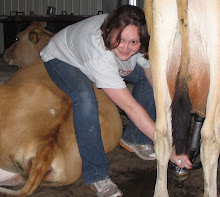My first
Foodie Pen Pal box was about discovering treasures that were right under my
nose. The priority mail box arrived full of things I can get quite easily, but
that aren’t currently on my usual shopping list. What a great reminder—and a
wonderful assortment of treats that I will now seek out. I was matched with Val
from South Carolina. From her blog, I could tell that she lives a very active
and healthy lifestyle. I was excited to learn from that, since I tend to take
my enjoyment of food and wine a little to far. (Shocking to read, I know.)
In my
introductory email, I told Val that I was interested in local food culture. She
sent me a Grawnola Bar, made in South Carolina,
which I enjoyed for breakfast only a couple days after it arrived. It was made
up of sprouted seeds, nuts and dried fruits (very tasty!) and kept me satisfied
until lunch. I am tempted to order a box online.
I also
told her of my love of soup, especially this time of year, so in my box there
were two organic boxes of soup which are now stashed in my desk drawer at work.
It’s nice to know that they’re there for a day when I need a quick, warming
meal.
I also
added a stash of treats that got me through many an afternoon this month: fruit
leather (which I haven’t had since I was a kid, and this kind was much better
than what I remember) and dark chocolate squares. That stash is now depleted,
but I assure you they were thoroughly enjoyed!
Val sent
me a recipe for her favorite morning smoothie, which I haven’t had a chance to
try yet. I am saving the natural peanut butter she sent in the box, which is one
of the ingredients. The recipe will be a nice change from the usual smoothie
I’ve been making with kale or chard from my CSA blended with mango, ginger and
chia seeds.
She also
sent me a tub of delicious blueberry almond granola from Whole Foods that she
said she stirs into her yogurt in the morning. This is what I’ve been having
for breakfast this week, and I’m hooked. Sitting here, looking at the last
portion that I’ll probably have as a snack today with plain Greek yogurt, I
know that I’ll have to go in search of granola soon. There are no Whole Foods
near me (so this was a special treat!) but plenty of stores where I’m confident
I can find a good variety.
This box of treats got me to change up my breakfast routine, which seemed appropriate because I sent a box to Sheila, who has a blog devoted to that most important of meals.
I'm so happy to have found this program, and look forward to this month's exchange (and being better about the timing of it.) You can find out more about how you can participate too here.






























